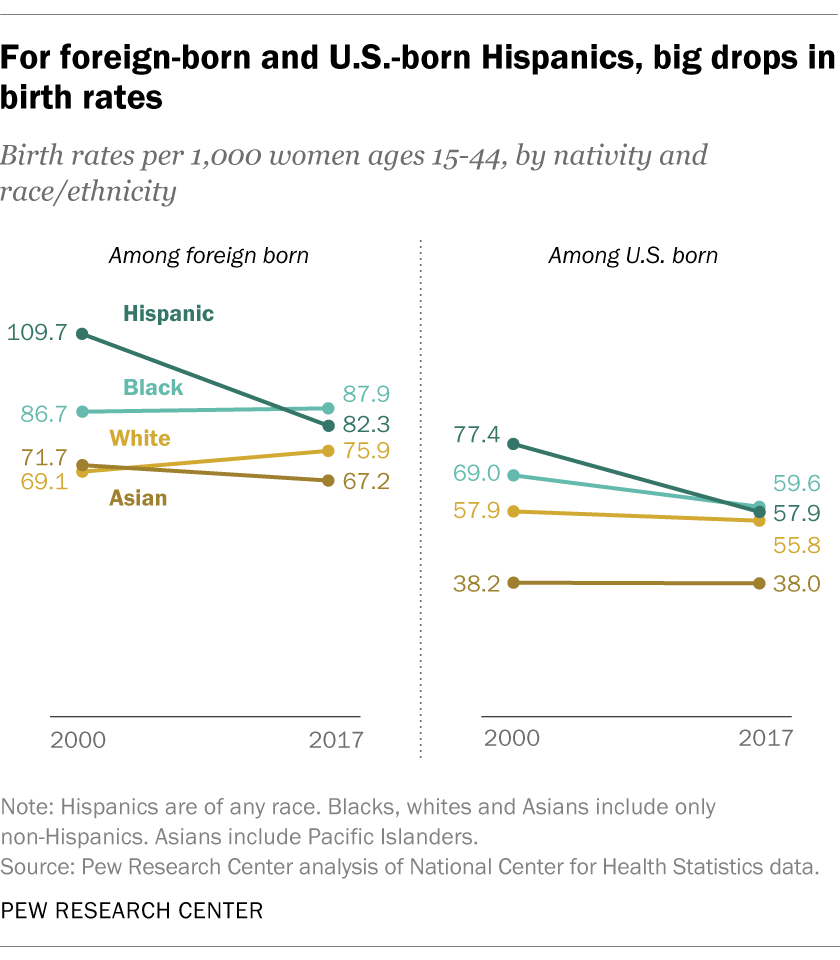@Eventine
I think that the idea of demographics driving ideology and innovation, rather than production, is quite underrated. It is well known that people are resistant to new idea after age 40 or so.
Last post I referred to US presidents when I said the US froze in time in 2000 or so, because their youngest president was born in 1961. But the population isn't much better.
The modal white American age was 58 in 2018.
Ever wonder why their policies and beliefs, even at the lowest levels, look like they're straight out of the 1970's? Because they are! The modal cohort's formative experience was in the late 1970's, early 1980's. They kept improving at a slower rate in the 1990's and 2000's as this cohort entered mid-career, but at this point, their beliefs are set in stone.
The median age is only holding steady (but at a high value) because the US is importing adult immigrants.
And those adult immigrants aren't having kids either.
Just in case you think this is limited to the US, ever wonder how come Japan or Lithuania is behaving like its still the 1980's, trying to push China around and threatening China, even when its hard power is nowhere near enough to do so?
In contrast, look at the population pyramid for China.
The big spikes at age 30-35 and 50-55? Correspond to China's baby boom in 1965-1970 and their children born in 1985-1990. When was China developing fastest? When the baby boom demographic matured in the workforce at around age 30-35 for the first round of reform in the mid 1990's and then when their kids entered the workforce around 2010.
It is no wonder that China is outmaneuvering these guys. It is literally putting 35 year olds against 58 year old grandpas.
And while the 58 year old grandpas laughed at the 35 year old's parents for being uneducated, these 35 year olds are just as educated as the grandpas.
In the late 2020's and 2030's China will shine bright. The wave of youth in their 20's and 30's will drive huge innovation, while a flexible leadership concentrated in the 1980's generation raised in an era of great change will be able to respond readily to challenges.
But then, the situation gets dark. The huge cutoff in the age 0 category (those born in 2020) and the further decline afterwards means that China's population will no longer be replenishing the baby boomers, while China's leadership will have ossified at the 1980's generation, kind of like how the US is ossifying its leadership around the 1960's Baby Boomer cohort.
Immigration will not solve this problem as even in the US, most immigrants or their descendants will never be able to truly enter the leadership class (sorry Vivek and Yang, the only 2nd generation immigrant that will lead is Trump).
Will China's leadership be more flexible? I doubt so - think about how the fact that on XHS, there's so many people who thought illegal dishwashers in the US could buy a house after working for 6 months or that toilets in Japan are clean enough to drink out of. How the fuck do these rumors survive contact with the truth even with millions of visitors to US and Japan? Because this was a widely printed rumor in 读者文摘 and 意林 in the 1990's and the vast majority of people will have this thought engraved into their head as just a simple fact.
There is still a window to reverse this but if this is not done, then unfortunately I see the same complacency and stagnation that came to tcome to China.






